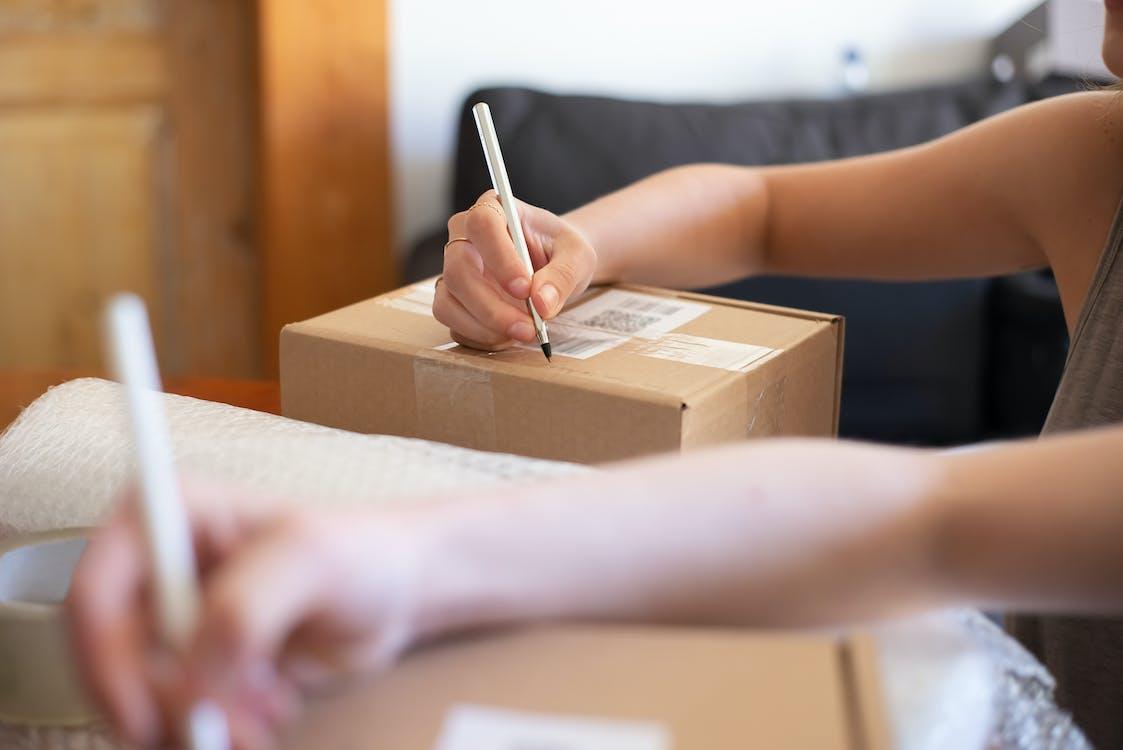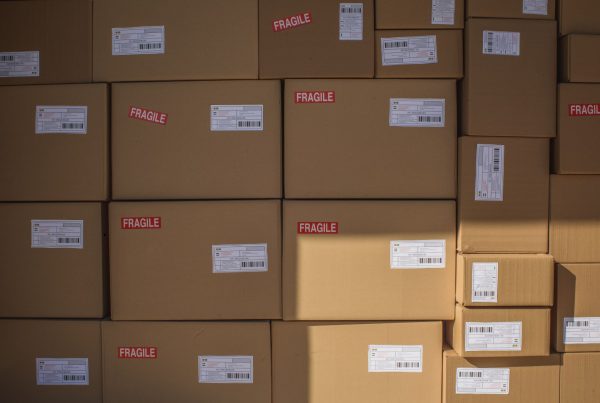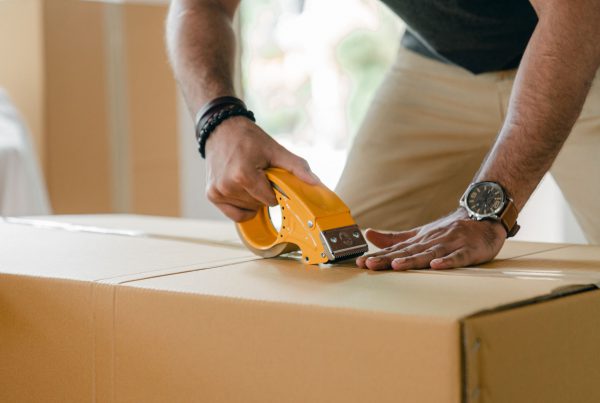The e-commerce industry has seen explosive growth, particularly during COVID-19, and will continue to do so as long as the internet remains the backbone of modern-day society. Even though this indicates that NOW is an excellent opportunity to get on board, it’s essential to know that there is more to e-commerce than just selling goods over the internet. With this exponential growth comes various challenges for a brand owner like you – the most prominent among them is the packaging.
Here, we will discuss how well-thought-out e-commerce packaging can hugely impact your e-commerce business’s success. Read on.
What is E-Commerce Packaging?
E-Commerce packaging refers to the packaging used to transport the items directly to customers and all that is associated with it, including the design, material, and contents of the package itself. From a logistical standpoint, the things surrounding an online product, helping it reach point A to point B, are known as e-commerce packaging. However, in 2023 and beyond, it will be much more than that.
E-Commerce packaging ensures that your product arrives in pristine condition in the hands of your online consumer. However, functionality is not the only benefit that e-commerce packaging can provide. Your product’s packaging can communicate the narrative of your business, cultivate true relationships with the consumers, and create a significant impression on first-time buyers. No matter the industry, all it just takes is some thinking outside the box—and inside of it, too.
Why Does E-Commerce Packaging Matter?
As discussed in the beginning, e-commerce packaging, in addition to its primary function of safeguarding the goods within, may also serve as its very own kind of advertising or as the hook that draws first-time buyers into becoming repeat customers. In other words, it is no longer just a means to an end; rather, it is an intuitive brand-crafted experience to create a lasting first impression.
The most common problem that e-commerce businesses face is that they can only give customers a tangible, in-store experience. Because of this, it is often difficult for a customer to believe that the brand is linked anywhere throughout. Since a buyer cannot physically hold a product before making a purchase online, this benefit comes only to brick-and-mortar establishments rather than to online retailers.
Brick-and-mortar stores have a considerably greater range of opportunities to deliver an engaging experience, which allows them to compete well with online e-commerce businesses. They can easily invest in intricate product displays near windows and storefronts and eye-catching in-store shelving and signage boards. Customers can physically engage with and evaluate a product before purchasing, which provides brick-and-mortar stores another benefit over online retailers.
Fortunately, online retailers have an extra tangible touchpoint to connect and delight customers: e-commerce packaging. When done correctly, it enhances the shopping experience, reduces the number of products sent back, gives the impression to the customer that the goods are cared for in an environmentally-friendly way, and finally, helps the brand stand out among competitors.
As surprising as this may seem, your e-commerce product’s packaging has the potential to act as walking advertising. When you place branded stickers on the corrugated box or just simply use custom emblazoned shipping tape, you are placing your brand name in front of every individual who holds the box, from the warehouse to the front door. This is true regardless of whether you choose to work with FBA or take a more traditional approach to selling your products online.
Corrugated Boxes – The Standard E-Commerce Packaging
Some people undoubtedly do not use the word “corrugated” every day; nonetheless, boxes constructed of this inexpensive and long-lasting material have been around for a long time. The majority of us take them for granted. Yet, the shipping business would not be the same without the introduction of this paper-based, fiberboard packaging, which quickly became the industry standard.
Corrugated fiberboard soon exceeded all other packaging materials at the turn of the 20th century and quickly became the standard transportation box for anything from tea and clothes to equipment and wine. In addition, it quickly gained popularity since it could be purchased cheaply, had a long lifetime, and was easy to use for printing images and text. Moving ahead, the postwar economic boom of the 1950s was particularly favorable to the rapid growth of corrugated packaging.
There are various sizes and forms of e-commerce packaging; nevertheless, most brands use corrugated boxes (standard cardboard with extra layering for ultimate package protection). Unless you are shipping an extremely small or hardy item, most products will require some packaging protection for safe transport, as well as some stuffing or cushioning, like peanuts or bubbles.
Corrugated fiberboard has accomplished much more in the 21st century than just maintaining its market share. Because of the explosion of online commerce, there is a larger need than ever for long-lasting shipping materials, and the corrugated cardboard box has been there for the ride the whole time. As discussed in the beginning, Amazon has been the most prominent consumer of corrugated boxes since the company ships millions of boxes in the United States and worldwide.
Top E-Commerce Packaging Concerns You Should Know
Although e-commerce packaging is not new to the game, some substantial changes are on the horizon for the associated procedures, materials, and dynamics. As we get closer and closer to the year 2023, it is imperative that all businesses engaging in e-commerce be aware of the requirements posed by potential customers, which leaves us to find answers to the following questions:
- What do customers anticipate getting out of the experience of unwrapping a product?
- What changes might we expect to see in the e-commerce packaging industry?
- What kind of effects does the circular economy have on materials and procedures?
- How are environmental concerns shaping the realm of e-commerce packaging?
Firstly, to deliver that “wow factor” that customers anticipate when unwrapping a product, the packaging has to achieve the ideal balance between practicality, functionality, and ability to brand the products online. However, it is not always simple to set this balance, and it may be a huge problem to locate that sweet spot that assures a minimal environmental effect and a satisfied customer.
Secondly, each and every solution that promotes the growth and survival of the ecosystem is here to stay—fortunately, corrugated boxes tick all the boxes for sustainability and biodegradability. With companies like Amazon and Target investing in boxes, the gloomy days of plastic trash are not yet behind us, but shifts are on the horizon with the advancements in the corrugated box industry.
When it comes to the circular economy, Amazon is not the only company that has to be concerned about the ever-increasing desire for solutions that produce little to no waste. When working to optimize your packaging, sustainability and environmental concerns are extremely important factors to keep in mind. As we move forward, the environmental effect will be a key focus and worry for the always-developing conscientious customer base and their rising involvement with online shopping.
How to Leverage E-Commerce Packaging?
The e-commerce packaging is like the icing on the cake and goes much beyond only safeguarding your product. The convenience of online purchasing has resulted in a reduction in the number of interactions customers have with various companies. Consequently, the packaging of products today plays an exceptionally important part. There are lots of creative ways that you can leverage it.
Use Innovative, Sustainable Packaging
Sustainability sells. Think about investing in environmentally friendly packaging and highlight how it reduces the impact on the environment, whether you decide to use bioplastics or cardboard made entirely from recycled materials. You may take this one step further by investing in plant-based packaging materials, such as corrugated boxes, to positively help the environment. This way, you can partner with your customers to significantly contribute to making the world a better place.
Tell Your Brand Story
Your e-commerce packaging has the potential to act as a canvas on which you may educate customers about the values that your brand upholds. You may print the mission statement inside the box or write a brief word about your business outside the product’s packaging. This helps customers feel closer to you and provides a better chance for them to do business with you again.
Utilize Packaging Elements
Imagine a world where all aspects of the packaging may be customized to complement your brand, including tape, shredded filler, and inserts. Determine which components of your e-commerce packaging give the most bang for your buck, and then personalize those pieces distinctively and creatively. This may be as easy as selecting tape or other materials that match your brand’s colors.
The Bottom Line
Packaging is more than just the box you intend to use to deliver your products. As an e-commerce business owner, you must set aside some time to strategize your packaging needs. Do experiments with various package iterations and then stick with what works for you. Partner with packaging vendors like The Boxery that sell environmentally-friendly, recyclable, and sustainable packaging options. After all, your ultimate goal should be to make the world a better place.





Recent Comments